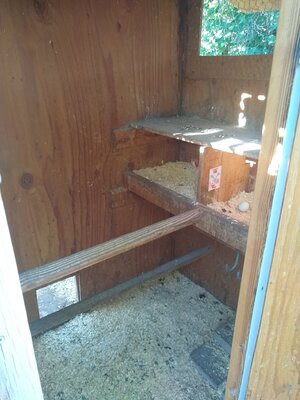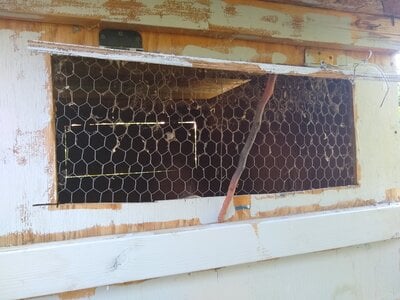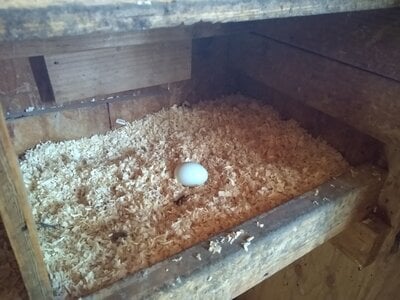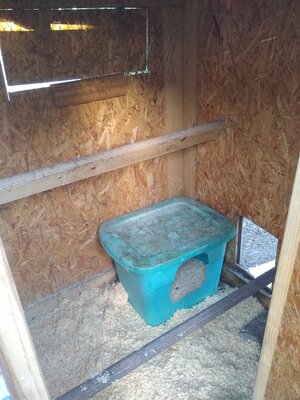Often times when people are building a chicken coop for the first time, they don't know where to start. Here is a list of the most important things to think about when you are building a coop.
1. Predator Proof
Predator proofing your coop might be tricky, but is well worth it. Check through this article here to make sure your plans will keep your flock safe: Predator Proofing for New and Existing Coops
2. Space
The basic rule is 4 square feet per standard-sized chicken, and 2 feet for bantams. But always plan for more space than you think you will need, chickens are very addicting!

The Tall Coop is fairly roomy, but chickens in a coop of this size should be aloud access outside to get a real stretch.
You can read here for more info: How much room do chickens need
3. Ventilation
Ventilation is an extremely important part of a chicken coop, quite possible the most important. I highly recommend taking the time to read this article: Chicken Coop Ventilation - Go Out There And Cut More Holes In Your Coop!

A window from The Tall Coop
4. Nesting Boxes
Nesting boxes are a necessary addition to a flock of laying birds. Without them, your hens will be stressed and won't lay as well. Read here for more info: Nesting Boxes: Everything You Need to Know About These Coop Essentials

One of the nesting boxes in The Tall Coop
5. Roosts
Lots of humans overlook the importance of roosts (aka perches), but chickens don't.
It's hard to find information about roost shapes, but the basics are that the chickens' toes should not be able to wrap all the way around the perch, round perches are not good for large and clumsy birds because they might slip off, and two-by-fours layed flat make good perches in cold climates because it prevents the chickens' feet from getting frostbite.

Inside of The Chick Coop, notice the two roosting bars.
Some people say that having roosts of separate heights in the same coop causes problems among the pecking order. This is more of a personal opinion than anything. If you have silkies or young chicks in the coop it is nice to have a lower roost. https://www.backyardchickens.com/threads/are-your-roosts-equal-heights.1403369/
Here is an interesting read: The perch experiment
If you are wondering what roost shapes other keepers of chickens use, check out this thread: https://www.backyardchickens.com/th...osts-do-you-use-in-your-chicken-coop.1403365/
I hoped this article helps you along your building course! When you finish your coop, please consider making a BYC (BackYardChickens) article about it in the chicken coops section! https://www.backyardchickens.com/articles/categories/chicken-coops.12/
1. Predator Proof
Predator proofing your coop might be tricky, but is well worth it. Check through this article here to make sure your plans will keep your flock safe: Predator Proofing for New and Existing Coops
2. Space
The basic rule is 4 square feet per standard-sized chicken, and 2 feet for bantams. But always plan for more space than you think you will need, chickens are very addicting!

The Tall Coop is fairly roomy, but chickens in a coop of this size should be aloud access outside to get a real stretch.
You can read here for more info: How much room do chickens need
3. Ventilation
Ventilation is an extremely important part of a chicken coop, quite possible the most important. I highly recommend taking the time to read this article: Chicken Coop Ventilation - Go Out There And Cut More Holes In Your Coop!

A window from The Tall Coop
4. Nesting Boxes
Nesting boxes are a necessary addition to a flock of laying birds. Without them, your hens will be stressed and won't lay as well. Read here for more info: Nesting Boxes: Everything You Need to Know About These Coop Essentials

One of the nesting boxes in The Tall Coop
5. Roosts
Lots of humans overlook the importance of roosts (aka perches), but chickens don't.
It's hard to find information about roost shapes, but the basics are that the chickens' toes should not be able to wrap all the way around the perch, round perches are not good for large and clumsy birds because they might slip off, and two-by-fours layed flat make good perches in cold climates because it prevents the chickens' feet from getting frostbite.

Inside of The Chick Coop, notice the two roosting bars.
Some people say that having roosts of separate heights in the same coop causes problems among the pecking order. This is more of a personal opinion than anything. If you have silkies or young chicks in the coop it is nice to have a lower roost. https://www.backyardchickens.com/threads/are-your-roosts-equal-heights.1403369/
Here is an interesting read: The perch experiment
If you are wondering what roost shapes other keepers of chickens use, check out this thread: https://www.backyardchickens.com/th...osts-do-you-use-in-your-chicken-coop.1403365/
I hoped this article helps you along your building course! When you finish your coop, please consider making a BYC (BackYardChickens) article about it in the chicken coops section! https://www.backyardchickens.com/articles/categories/chicken-coops.12/
